With the days getting longer and warmer, now is the perfect time to start planning your front yard vegetable garden! Growing produce can be an incredibly rewarding hobby that could give you delicious meals, snacks and even cut down on grocery bills.
Transform your boring front lawn into a bountiful culinary retreat with these easy-to-follow ideas for starting a productive front yard vegetable garden!
From choosing the best plants for container gardening to great tips for keeping deer away from delicate fruits and vegetables; this guide will help get you started towards greener pastures.
How to Plan a Vegetable Garden?
The first step in creating the perfect front yard vegetable garden is to plan ahead. Before diving into any project, it’s important to take a look at how much space you have available and what type of plants you want to grow.
If your front lawn space is limited, container gardening can be an excellent way to grow vegetables without taking up too much room. Container gardens are also best for growing fragile and delicate plants like strawberries, tomatoes and herbs. [1]
Keep Your Veggie Garden Going
Once your garden is planted and growing, there are still a few things to keep in mind. For one, it’s important to provide adequate drainage so that your plants don’t become waterlogged or prone to pests and diseases. Additionally, you’ll want to regularly check the soil pH levels and add fertiliser as needed.
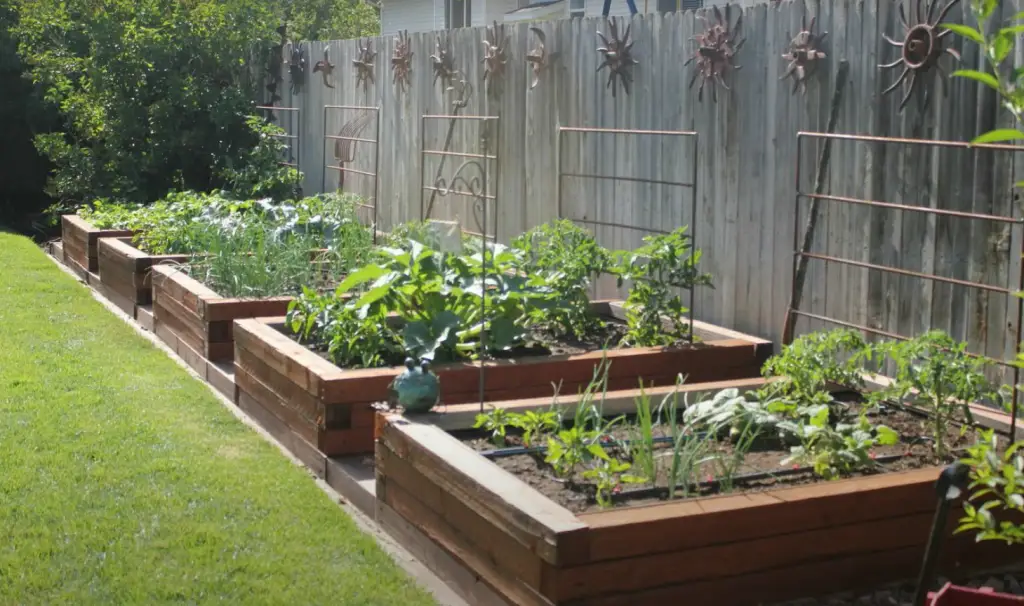
It’s also important to stay on top of weeding and watering your garden as needed. If you live in an area with a lot of deer, it may be necessary to take precautions such as installing fencing or using repellent sprays.
Stylish Raised Bed Ideas
Raised beds are good if you have enough space. They make the soil better and make your garden look nicer. You will get more vegetables and the garden will look better.
Think about using recycled wood or stone from older buildings – this will give your garden a unique, vintage look. You could also consider adding trellises or arches to give your garden an elegant touch.
These are just a few of the many front yard vegetable garden ideas you can use to start gardening with success!
How to Start a Vegetable Garden?
Selecting a Site
Choosing the right spot to start your vegetable garden is an important part of success. Select a sunny spot with well-drained soil and good air circulation. Make sure it’s far enough away from trees and buildings that it won’t be shaded throughout the day.
Testing Your Soil
Before you start planting, it’s important to test the soil to make sure it has enough nutrients and that the pH is in the right range for your vegetables. You can buy a soil testing kit at any garden centre or hardware store.
Removing Sod and Vegetation
Once you’ve chosen the spot for your vegetable garden, it’s time to remove all the grass and weeds. You can do this manually or use a tiller. If using a tiller, be sure to work slowly and in straight lines so that the soil is properly aerated.
Building Raised Beds
Raised beds are a great way to give your vegetables the best growing conditions. They can make watering and weeding easier, since you don’t have to work around plants that may be too large for the space.
You can build raised beds with wood or stone, depending on your budget and desired style. Make sure the sides of the beds are at least 10 inches high, or taller if needed.
Finding Space for Veggies in a Small Yard
If you have a small yard, don’t let that deter you from having a vegetable garden. There are plenty of ways to maximise the space and make it work for you.
Try using containers or hanging baskets if there isn’t enough room on the ground. You can also look into vertical gardening options like living walls or trellises.
A Stylish Raised Bed Almost Anyone Can Build
If you are looking for a stylish raised bed option that is easy to build and maintain, try building one with stone or brick. These materials look great in any yard and can be built in almost any size. Make sure the stones or bricks are securely stacked so they won’t come apart over time.
How to Make a Straw-Bale Garden?
Build a Garden Out of Straw
Straw bales are an easy and affordable way to start a vegetable garden. Get some straw bales, soil, and seeds. Place the straw bales where you want your garden to be and water them for several days. This will help them break down and give your vegetables the nutrition they need to grow strong.
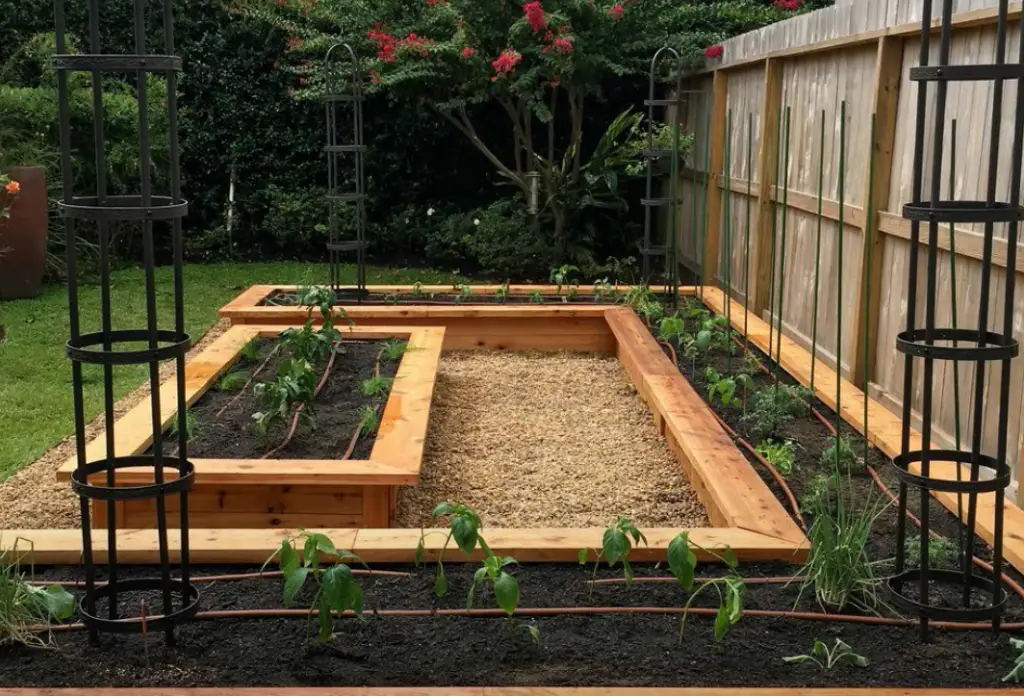
Once the bales are soft and damp, you can start adding soil, compost and fertiliser. Then simply plant your seeds! Water regularly to keep the bales moist, and you’ll be well on your way to having a successful garden.
For an extra-special touch, consider decorating your straw-bale garden with some decorative stones or planters. This is a great way to add colour and personality to your garden without taking up too much space.
How to Create a Pest-Proof Vegetable Garden?
When growing vegetables, you need to keep away pests. Put a fence or netting around the garden. Plant herbs and flowers that will scare off bugs like aphids and beetles. Put ladybugs and praying mantises in the garden too. They will help keep pests away naturally.
It’s important to inspect your plants regularly for signs of pests and take action as soon as you see them. This can help prevent an infestation from taking over your garden. With these tips, you can create a pest-proof vegetable garden that produces healthy, delicious vegetables.
Why Grow Food in Your Front Yard?
Growing food in your front yard is a great way to add beauty and function to the space. It’s also an excellent way to save money on groceries, reduce your environmental footprint, and get fresh, organic produce. Plus, it can be a fun activity for the whole family!
In addition, growing vegetables in your front yard can help you build a sense of community. You can share your harvest with neighbours or host a potluck in your garden. Plus, it’s an easy way to teach children where food comes from and the importance of growing fresh, healthy foods.
What to Grow In Your Front Yard Vegetable Garden?
When deciding what to grow in your front yard vegetable garden, consider the size of the space and the amount of sunlight it gets. Consider planting vegetables that you know you’ll use, such as tomatoes, cucumbers, peppers, leafy greens, carrots, and herbs.
Also consider growing some flowers or edible plants for their beauty and nutritional benefits. Sunflowers, bee balm, and lavender are all good options. These plants can attract beneficial bugs to your garden, provide food for wildlife, and look great in the process!
Finally, consider planting drought-tolerant vegetables like okra or squash if you don’t have time to water your garden every day. These vegetables can survive even in dry climates and help save you time and energy. [2]
Quick Tips for a Successful Front Yard Vegetable Garden
When starting your front yard vegetable garden, the key to success is good preparation and planning.
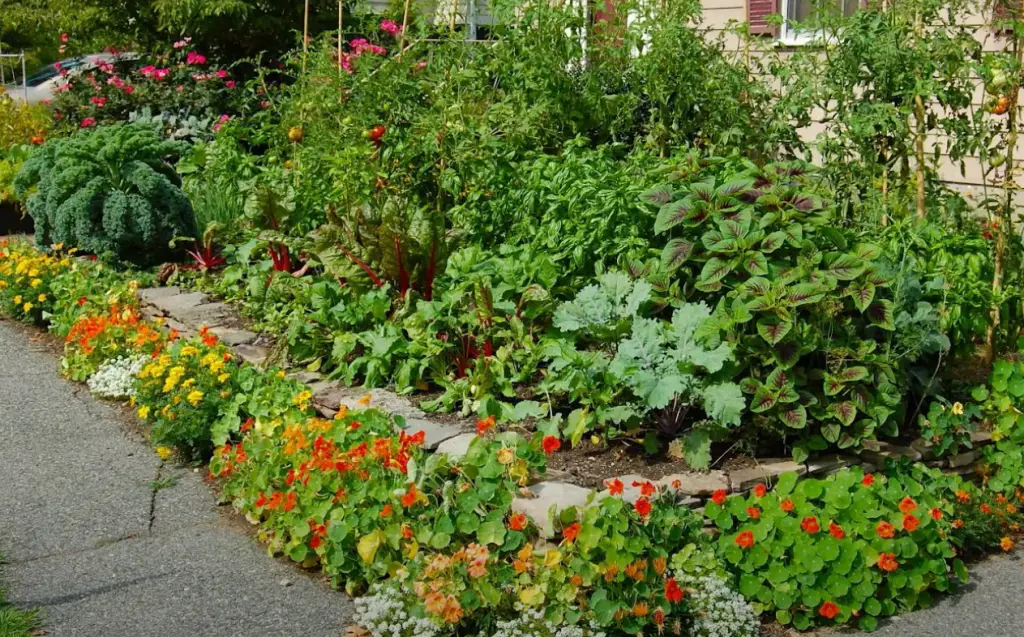
Make sure you choose a spot that gets plenty of sunlight throughout the day. Also consider things like soil quality, drainage, and how often you’ll need to water your plants.
To ensure successful growth, it’s important to use quality soil and provide adequate drainage.
You should also water regularly, preferably in the morning before it gets too hot outside.Finally, make sure to remove any weeds or unwanted plants from your garden that could compete with your vegetables for resources. With these tips, you’ll be well on your way to creating a successful and abundant front yard vegetable garden!
FAQ
What is the best layout for a vegetable garden?
The best layout for a vegetable garden depends on the size of your space and the amount of sunlight it receives. Generally, it’s best to arrange plants in long rows or blocks so that they receive equal amounts of sun and air circulation.
What vegetables grow well in shady areas?
Vegetables that do well in shady areas include leafy greens like lettuce, Swiss chard, and kale. Root vegetables like beets and carrots also do well in partial shade.
What is the best time to plant a vegetable garden?
The best time to plant a vegetable garden depends on your location and climate. Generally, it’s best to start planting in early spring or late summer when the soil is warm and moist. Cooler weather vegetables like broccoli, cabbage, and kale can be planted a few weeks before the last expected frost.
How often should I water my vegetable garden?
The amount of water your vegetable garden needs depends on the climate you live in and the type of plants you’re growing. Generally, it’s best to water your garden deeply at least once a week. Make sure to check the soil regularly and add water if necessary.
Can you have a garden in the front yard?
Yes, you can have a garden in the front yard! There are many benefits to having a vegetable garden in your front yard, such as fresh produce, community connections, and teaching children about where food comes from.

Just make sure to check with local ordinances before starting your front yard vegetable garden.
What are the best vegetables to grow in your backyard?
The best vegetables to grow in your backyard depend on the amount of space and sunlight available.
Popular options include tomatoes, peppers, cucumbers, leafy greens, carrots, squash, and herbs. You can also plant some edible flowers for their beauty and nutritional benefits.
What side of the yard is best for a vegetable garden?
The best side of the yard for a vegetable garden is the one that receives the most sunlight. Generally, this will be the south-facing side of your house. Make sure to avoid any shady spots or areas with poor drainage.
What is the fastest-growing vegetable?
The fastest-growing vegetable is usually radishes, which can be harvested in as little as 21 days. Other quick-growing vegetables include lettuce, spinach, and turnips.
Can you grow vegetables all year round?
Yes, it’s possible to grow vegetables all year round depending on the climate you live in.
For warmer climates, you can plant warm-weather vegetables such as tomatoes, peppers, and squash during the summer months.
What is the easiest vegetable to grow?
One of the easiest vegetables to grow is lettuce, as it requires little maintenance and can be harvested in a few weeks. Other easy options include carrots, spinach, radishes, peas, green beans, and zucchini.
What kind of soil do you need for a vegetable garden?
For a successful vegetable garden, it’s important to use quality soil that is rich in nutrients and well-draining.
If your soil is lacking in fertility, you can supplement it with compost or other organic matter. It’s also a good idea to do a soil test before planting to check for nutrients and pH levels.
How much space do you need for a vegetable garden?
The amount of space you need for a vegetable garden depends on the vegetables you’re growing. Generally, larger vegetables like squash and cucumbers need more space than smaller plants like lettuce and radishes.
It’s best to arrange your plants in long rows or blocks so that they get equal amounts of sun and have room to grow.
Can carrots be grown in partial shade?
Yes, carrots can be grown in partial shade as long as they get at least 4-6 hours of direct sunlight a day. Leafy greens like lettuce and spinach, as well as root vegetables like parsnips and beets, also grow well in partial shade.
Do vegetable gardens attract pests?
Yes, vegetable gardens can attract pests such as aphids, caterpillars, and snails. To prevent this, make sure to keep your garden free of debris and weeds and use natural pest control methods like companion planting or insect-repellent plants.
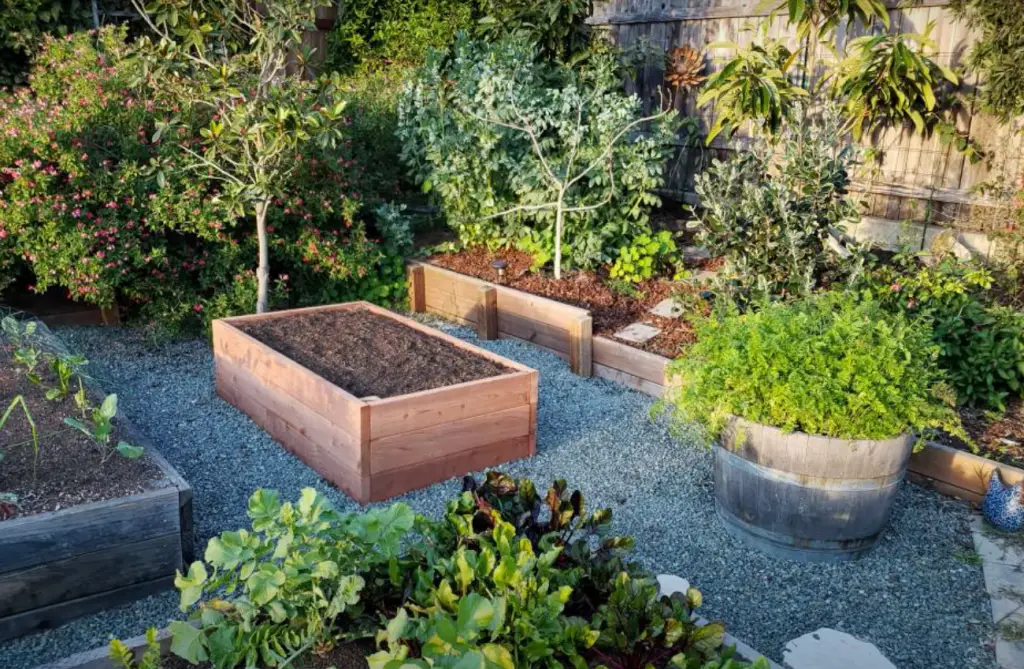
You can also use a homemade garlic spray or soapy water to get rid of any pests that do appear.
Do vegetable gardens need to be fertilised?
Yes, vegetable gardens should be fertilised regularly in order to ensure healthy plant growth and optimal yields. Organic fertiliser is best for vegetable gardens, as it provides a slow release of nutrients and is safe for the environment.
Make sure to use a fertiliser that is specifically formulated for vegetables, and follow the instructions on the label for best results.
What is the best way to water a vegetable garden?
The best way to water a vegetable garden is to provide an even amount of moisture throughout the growing season. A soaker hose or drip irrigation system can help ensure that your plants are getting enough water without overwatering. Make sure to check your soil regularly and adjust your watering schedule accordingly.
What are some tips for growing a successful vegetable garden?
Some tips for growing a successful vegetable garden include:
- Selecting the right location. Make sure your garden receives at least 6 hours of direct sunlight a day and choose a spot with well-draining soil.
- Preparing the soil. Start by testing the pH level and nutrient content of the soil, and add organic fertiliser or compost if needed.
- Planting seedlings or seeds at the right time. Research when to plant each type of vegetable in your climate so that you can get an early start on the growing season.
- Watering regularly and deeply. Make sure to water your plants deeply 1-2 times a week to encourage healthy growth.
- Monitoring for pests and diseases. Check your plants regularly for signs of disease or pests, and act quickly to prevent them from becoming a problem.
- Harvesting at the right time. Different vegetables need to be harvested at different times in order to get optimal flavour and texture. Do some research to find out when the best time is for each vegetable.
How can you use companion planting in a vegetable garden?
Companion planting is an effective and eco-friendly way to protect your vegetable plants from pests. Certain plants can be grown together to create a natural pest repellent, while others will attract beneficial insects like ladybugs and bees that help keep your garden healthy.
Some popular companion plant combinations include: tomatoes and basil, peppers and onions, squash and nasturtiums, beans and corn, marigolds and potatoes.
When planning your vegetable garden, take some time to research the best companion plants for each type of vegetable.
How can you make a vertical vegetable garden?
Vertical vegetable gardens are an excellent way to save space and create an aesthetically pleasing addition to your backyard. There are many different ways to construct a vertical vegetable garden, such as using trellises, hanging baskets, or wall-mounted planters.
You can also build your own structure using wood or metal frames and netting. Make sure to select vegetables and herbs that are suitable for growing vertically, such as pole beans, cucumbers, cherry tomatoes, and lettuce.
Also consider the weight of your plants when selecting a structure – taller structures may need additional support.
How can you make a container vegetable garden?
Container gardens are a great way to grow vegetables, herbs, and flowers in even the smallest of spaces.
Choose containers that are large enough for each type of plant – small pots or window boxes work great for herbs and lettuce, while larger containers such as half barrels or raised beds can accommodate root vegetables like carrots and potatoes.
Make sure to select a potting soil that is specifically formulated for vegetables, and place your containers in an area with at least 6 hours of direct sunlight.
You may also need to supplement your container garden with additional water or fertiliser throughout the growing season.
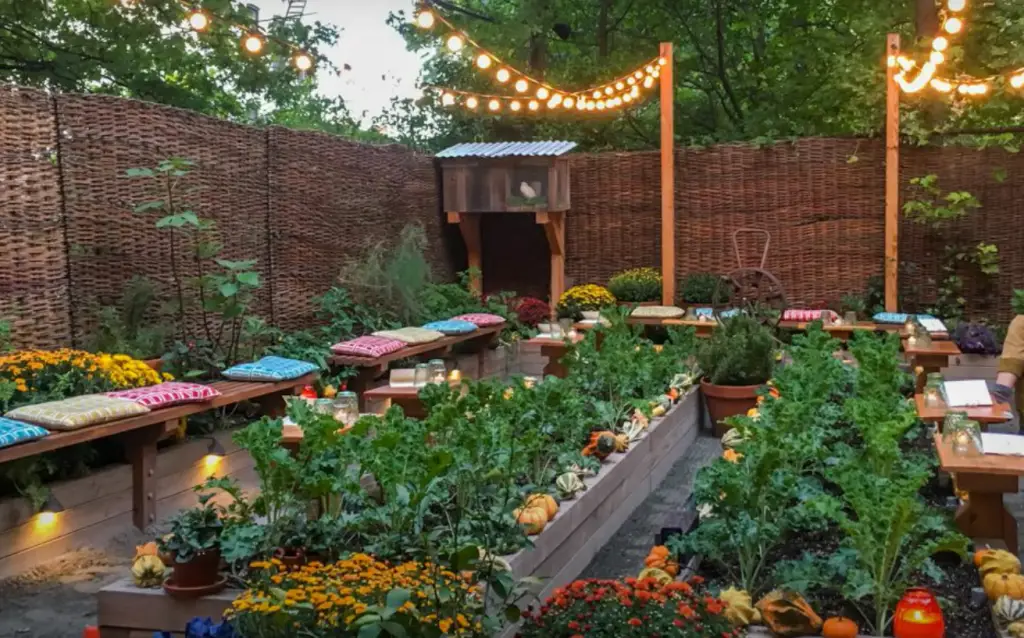
Creating an eco-friendly vegetable garden doesn’t have to be difficult. Start by selecting native plants that are well-suited to your climate, as these will require less water and fertiliser than non-native varieties.
Choose organic fertilisers and pest control products whenever possible, as these contain fewer chemicals that can be harmful to the environment. Consider using companion planting and mulching to help reduce the need for pesticides, and use compost or manure to enrich your soil.
Finally, consider collecting rainwater in a barrel or cistern to help keep your garden watered without draining local resources.
Does a vegetable garden need to be in the sun?
Yes, most vegetables will require at least 6-8 hours of direct sunlight per day in order to grow healthy and produce a good yield.
If you don’t have an area that receives enough sunlight, consider planting your vegetables in containers and moving them around periodically to maximise their exposure.
You can also look for varieties of vegetables that are more shade-tolerant, such as lettuces, arugula, and kale. You may need to supplement the sunlight with artificial lighting if you’re growing indoors.
Do vegetable gardens need to be watered regularly?
Yes, vegetable gardens usually require regular watering in order to keep the soil moist and ensure that your plants have enough nutrients. Depending on the climate, you may need to water daily or several times per week.
In hot and dry climates, consider using a drip irrigation system or water-saving techniques such as mulching or using a rain barrel to conserve water. In cooler climates, make sure to check the soil moisture regularly and adjust your watering schedule accordingly.
Does a vegetable garden need to be fertilised?
Yes, most vegetable gardens will benefit from regular fertilisation in order to ensure that the plants have access to all of the necessary nutrients. Organic fertilisers such as compost or manure are great options for eco-friendly gardening.
However, if you’re growing your vegetables in containers, you may need to use a water-soluble fertiliser in order to ensure that the plants get enough nutrients. Make sure to follow the instructions on the package for correct usage and application.
Do vegetable gardens need to be weeded?
Yes, just like any garden, your vegetable garden will need regular weeding in order to keep the weeds from competing with your plants for resources.
Hand-weeding is usually the most efficient method, but you can also use mulch or other types of weed-control products to help reduce the amount of weeding necessary.
If you’re using containers, make sure to check for weeds regularly as they can take over quickly in such a confined environment.
Does a vegetable garden attract pests?
Yes, most vegetable gardens will eventually be affected by some type of pest or disease. The best way to prevent this is by selecting resistant varieties of plants and practising good gardening hygiene, such as removing debris and debris from the area.
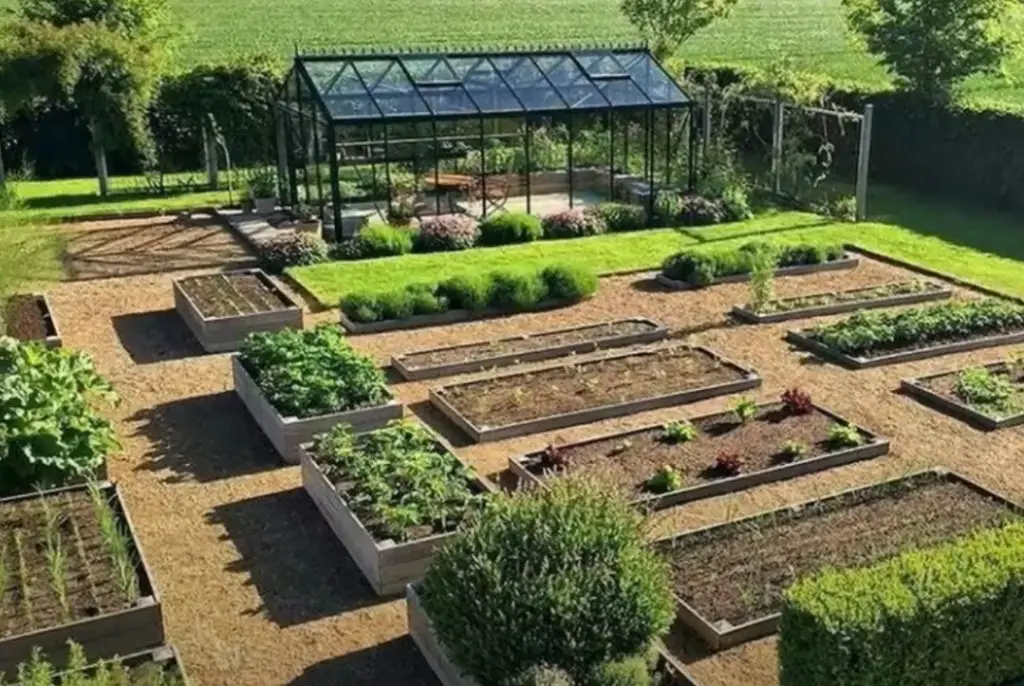
Additionally, consider using companion planting and organic pest control methods whenever possible in order to reduce the need for chemical pesticides. Finally, make sure to check your plants regularly and take action if you see any signs of pest damage or disease.
Do vegetable gardens need a lot of maintenance?
It depends. If you’re using raised beds or containers, your garden may require more frequent watering and fertilising than if you were planting in an open field.
Additionally, weeds will likely still be a problem, so regular weeding is essential for keeping the plants healthy and preventing pest infestations.
However, if you’re diligent about caring for your garden, it can be a relatively low-maintenance endeavour.
Useful Video: Top 10 Tips to Start Your Front Yard Vegetable Garden (Edible Landscaping)
Conclusion
Ultimately, starting a vegetable garden in your front yard may be more convenient and rewarding than you expected. Whether you choose raised beds or an in-ground layout, the key to success lies in providing ample sunlight and allowing your plants to grow well-drained soil.
By implementing efficient watering techniques and amending the soil with nutritious additives such as manure or compost, you can take your front yard vegetable garden from forgotten to flourishing. All that’s left is to get out there and begin digging the perfect vegetation plot for your new small-space escape!
Not only are you bound to save significantly on produce costs, but you will also feel personally rewarded via increased wellness (thanks to spending time outside) and exaltation at watching something truly worthwhile come to life right before your eyes.
So don’t wait – start planning your front yard vegetable garden today and make sure it blooms as much in beauty as it does delicious produce!
References:
- https://www.finegardening.com/project-guides/fruits-and-vegetables/front-yard-veggies
- https://www.ruralsprout.com/front-yard-vegetable-garden/





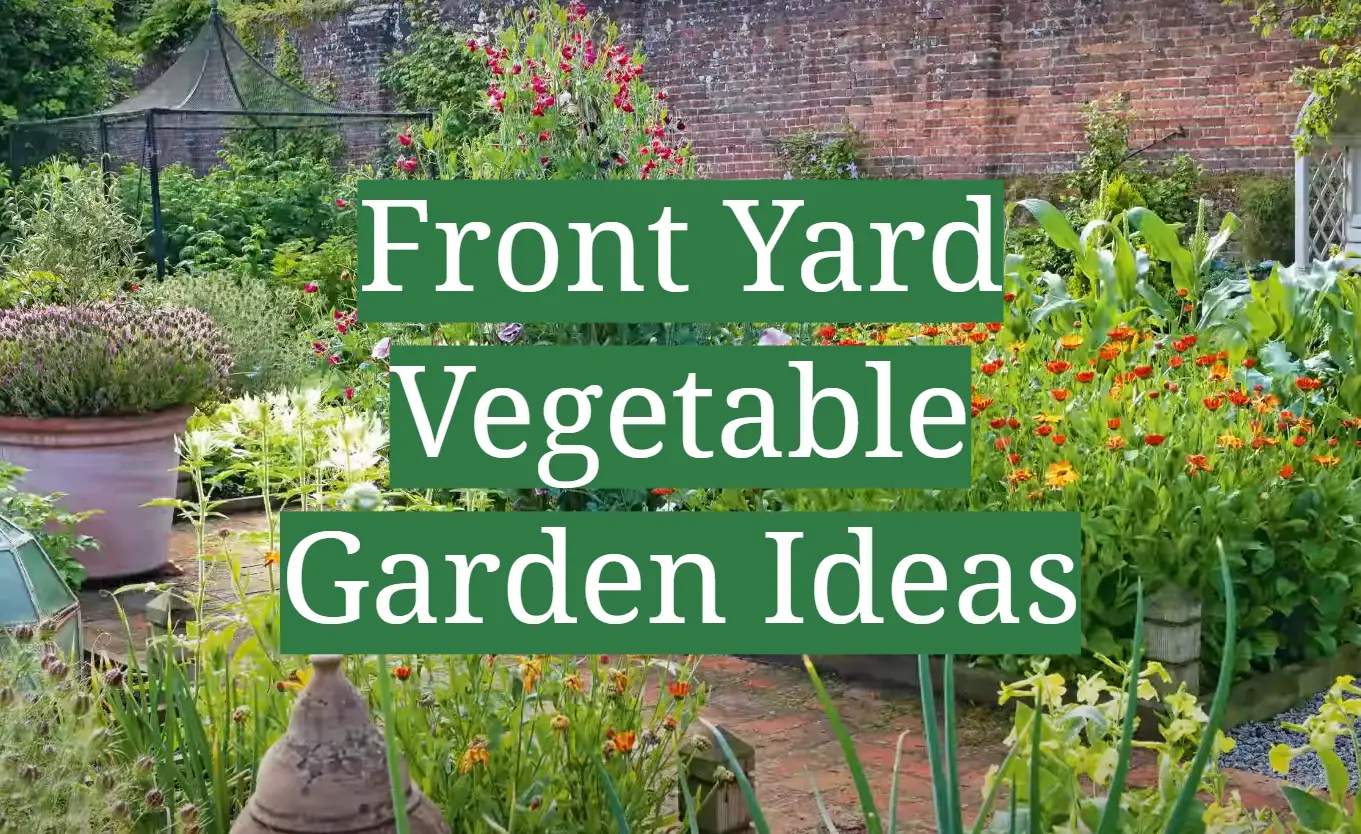




Leave a Reply
View Comments